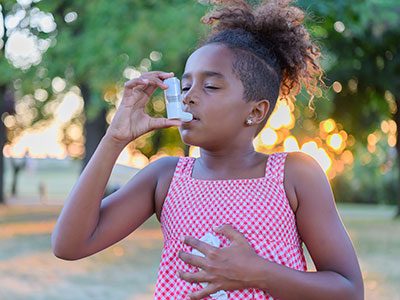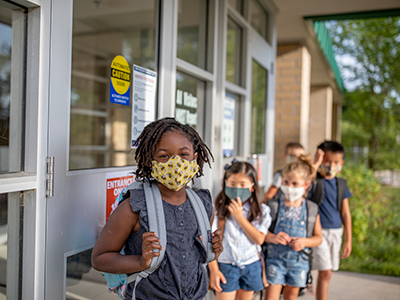According to the Centers for Disease Control and Prevention (CDC), 8.3% of children have asthma. This means that parents, caregivers, teachers, school nurses and administrators need to work together to make sure they are ready to manage asthma in school.
Remember, we are all in this together – asthma in schools is a TEAM approach:
T – Teachers should allow for appropriate accommodations. Some children who are diagnosed with asthma may need educational support at school through Section 504. A 504 Plan is created to make sure that supports are in place so a child will succeed at school. Examples of supports might include the ability to leave class early before physical activity to take quick relief medicine, more time to complete school work when out for illness or a second set of books for home.
E – Ensure an asthma friendly environment (reducing exposures at school from carpet, allergens, pests and strong smells).
A – Administer medications at school when needed by ensuring the school nurse has an Asthma Action Plan (AAP) and school albuterol. Many kids have an asthma diagnosis but are missing any combination of an inhaler, spacer or AAP.
M – Manage your child’s asthma with your provider every 3 months to assess control and need for daily controller medications.
Make sure your child has their quick relief inhaler at school
For children who have been prescribed a controller or daily asthma medication, it is important to take the controller as prescribed, often daily before and after school.
Children with asthma should also have a quick relief inhaler (albuterol) at school with an AAP on file. When a child with asthma has asthma symptoms at school but does not have their quick relief medication or the required Asthma Action Plan, symptoms can progress and worsen leading to an urgent care, emergency department visit or hospitalization and ultimately missed school. It is important to treat asthma symptoms early per the child’s individual AAP.
Asthma is a leading cause of school absenteeism, accounting for 30% of all missed school days or about 14 million absences each school year. Proper education around early recognition of asthma symptoms (yellow zone on the AAP) and proper technique of inhaled medication administration (spacer use) is imperative to ensuring good asthma control.
Follow these tips to make sure your child’s asthma is well managed in school:
- Schedule an asthma visit with your child’s health care provider.
- Review your child’s asthma symptoms and triggers to see if anything has changed since last school year.
- Complete an AAP with your provider and make a copy for the school nurse.
- Ask your provider to prescribe two rescue inhalers (albuterol) and write “dispense one for home and one for school” on the prescription.
- Take your AAP, quick relief inhaler (albuterol) and a spacer to the school nurse or trained medication administrator at your child’s school.
To learn more about how you can get involved in asthma research at Children’s National, please contact us at 202-476-2628.
 https://riseandshine.childrensnational.org/wp-content/uploads/2024/12/school-nurse-feature.jpg
300
400
Danielle Robbins
https://riseandshine.childrensnational.org/wp-content/uploads/2017/11/childrens_riseandshine_logo.jpg
Danielle Robbins2024-12-24 11:28:462025-06-24 13:35:39Advice from the school nurse: Health tips every parent needs to know
https://riseandshine.childrensnational.org/wp-content/uploads/2024/12/school-nurse-feature.jpg
300
400
Danielle Robbins
https://riseandshine.childrensnational.org/wp-content/uploads/2017/11/childrens_riseandshine_logo.jpg
Danielle Robbins2024-12-24 11:28:462025-06-24 13:35:39Advice from the school nurse: Health tips every parent needs to know





















My daughter’s asthma is so bad. I think that I need to be better about sending her to school with her inhaler if an accident is to occur. I would hate for her not to have it in times of need. I will email her teacher at once.